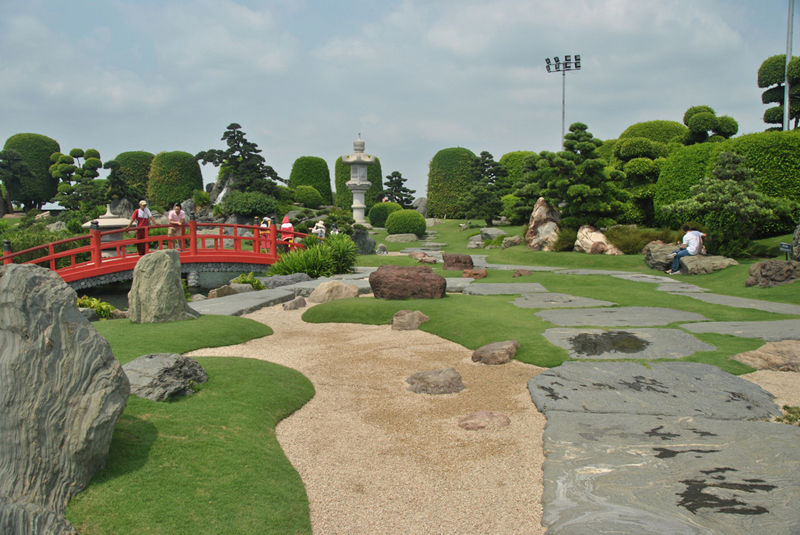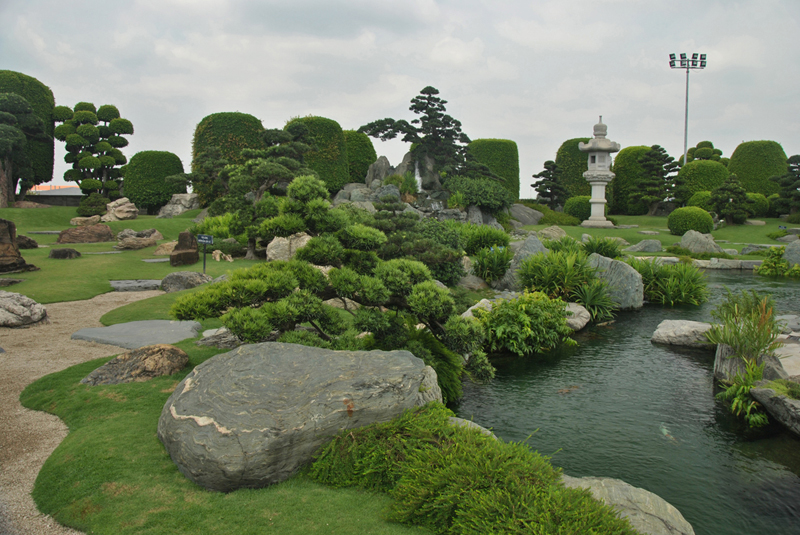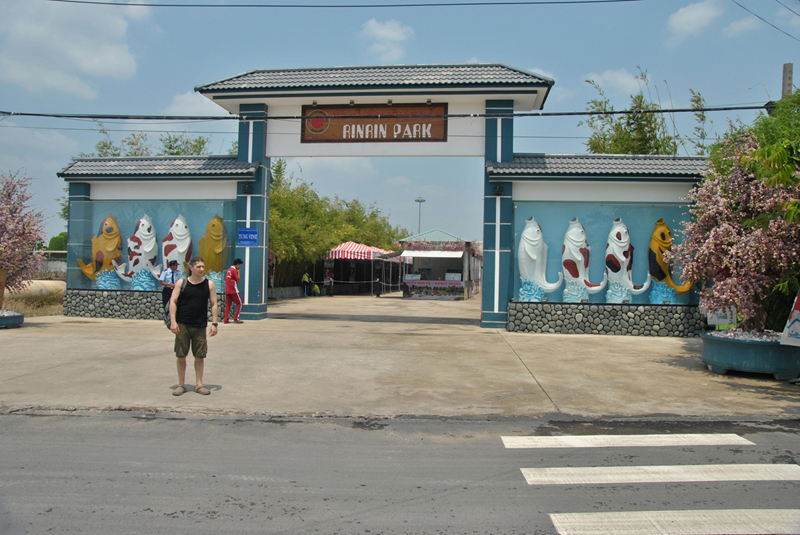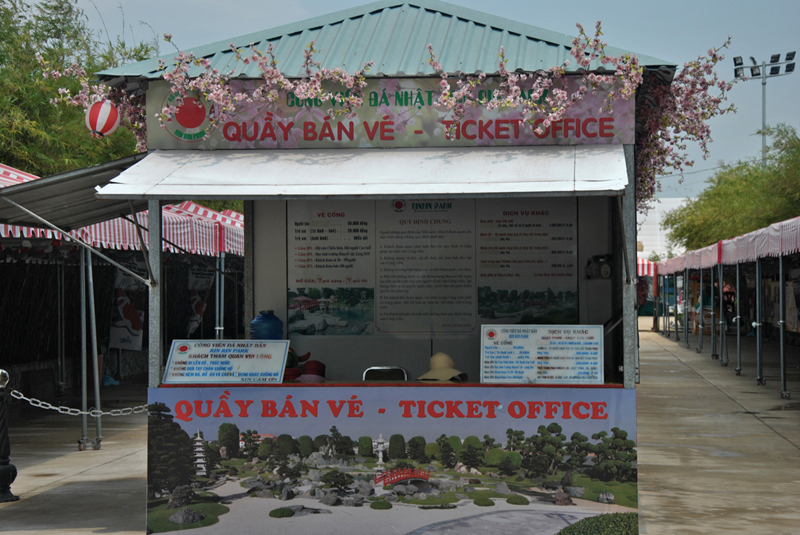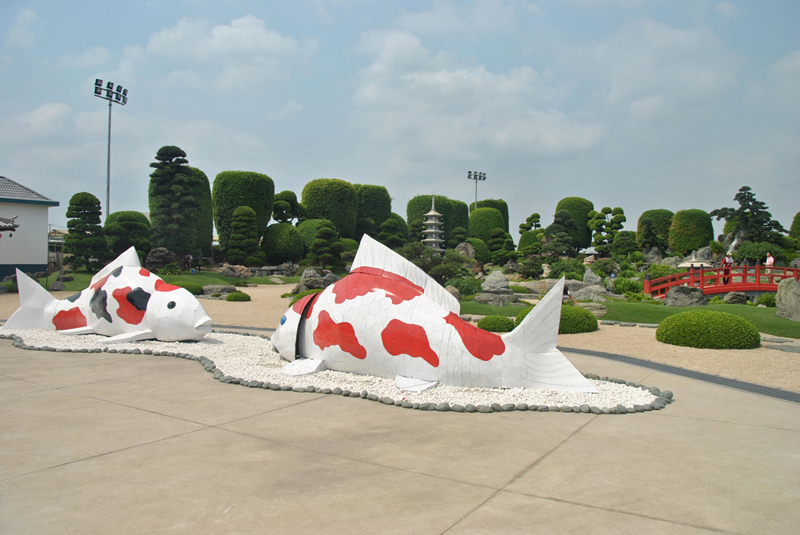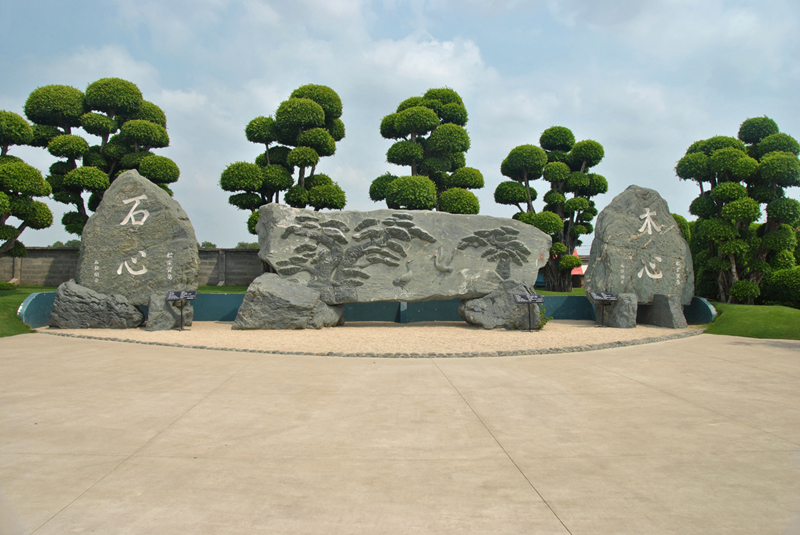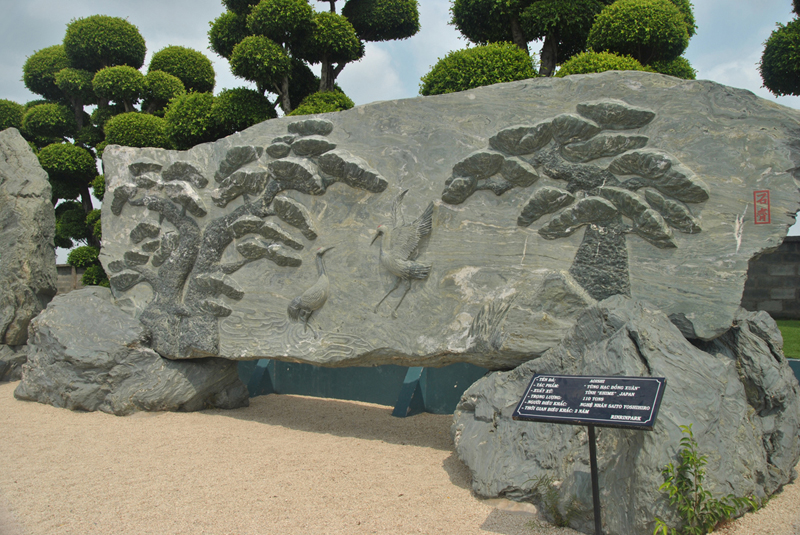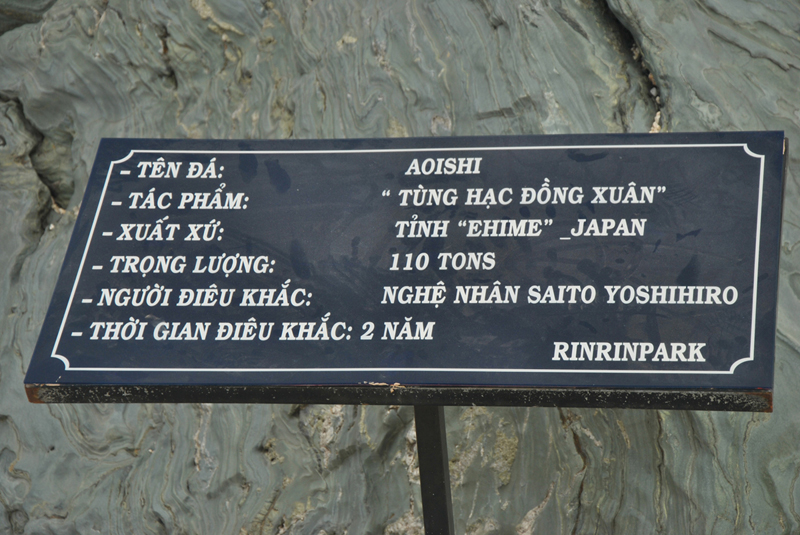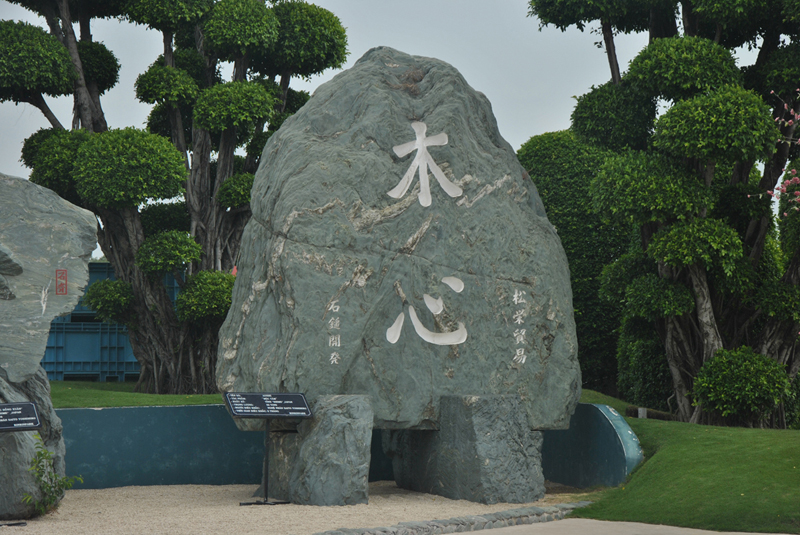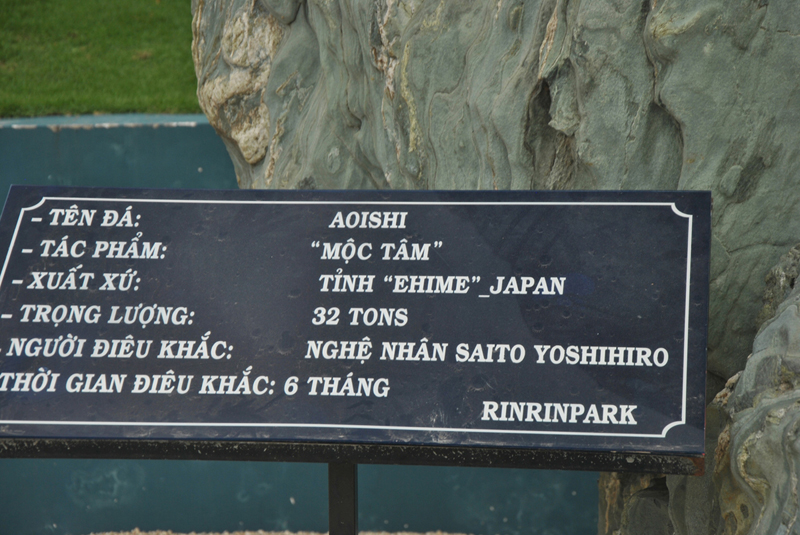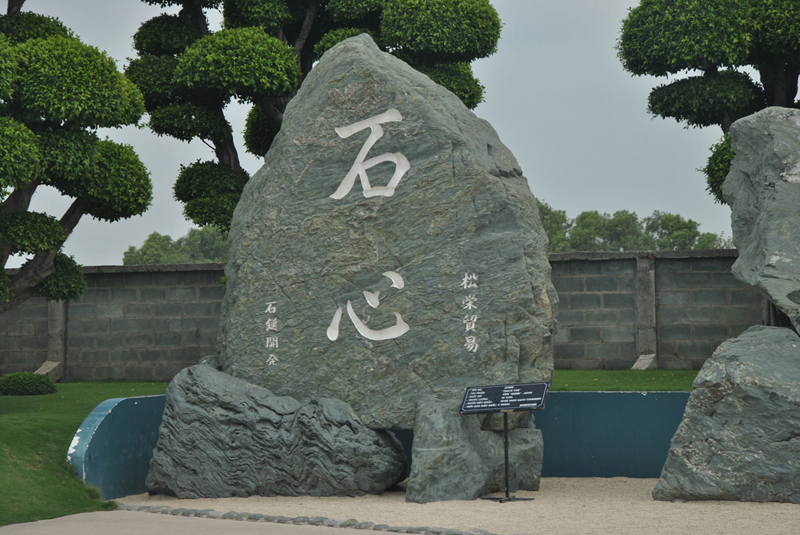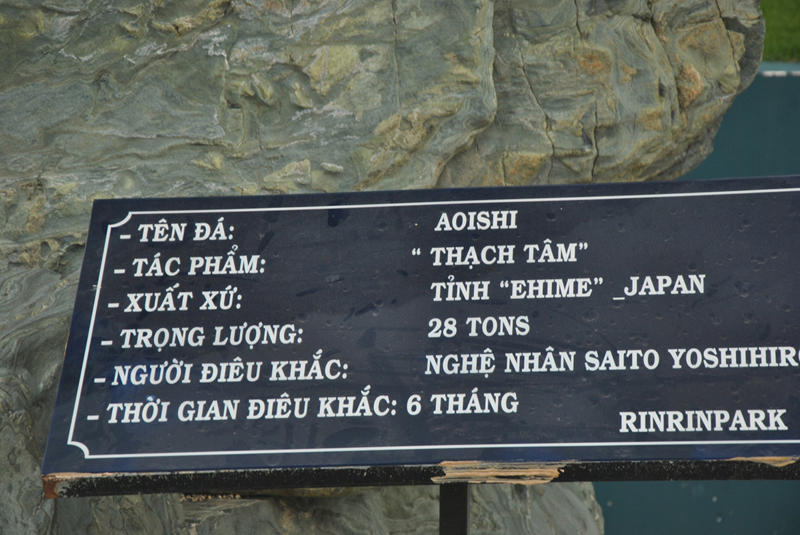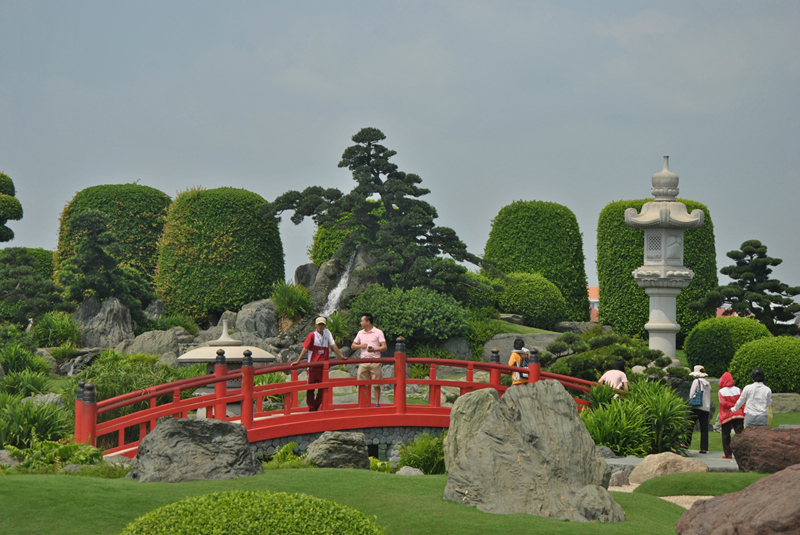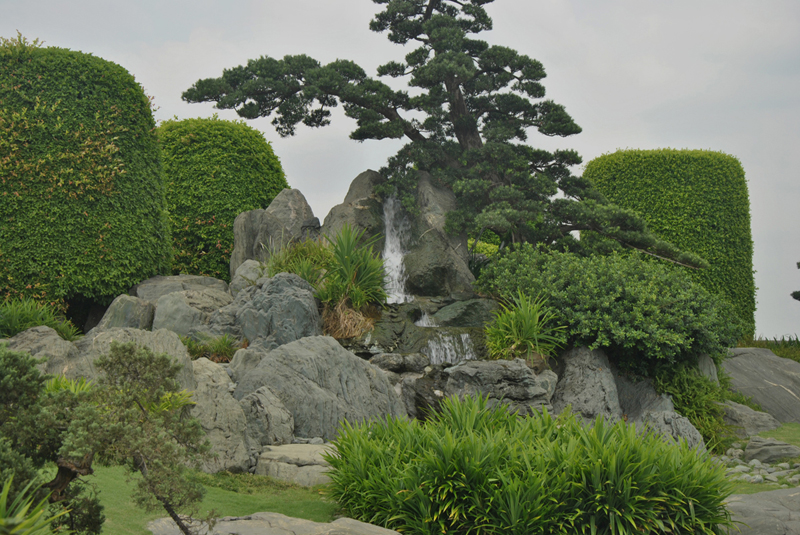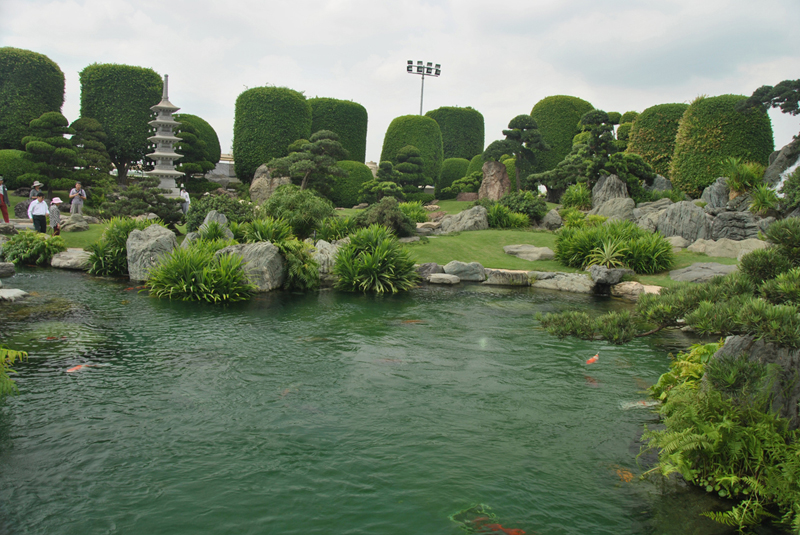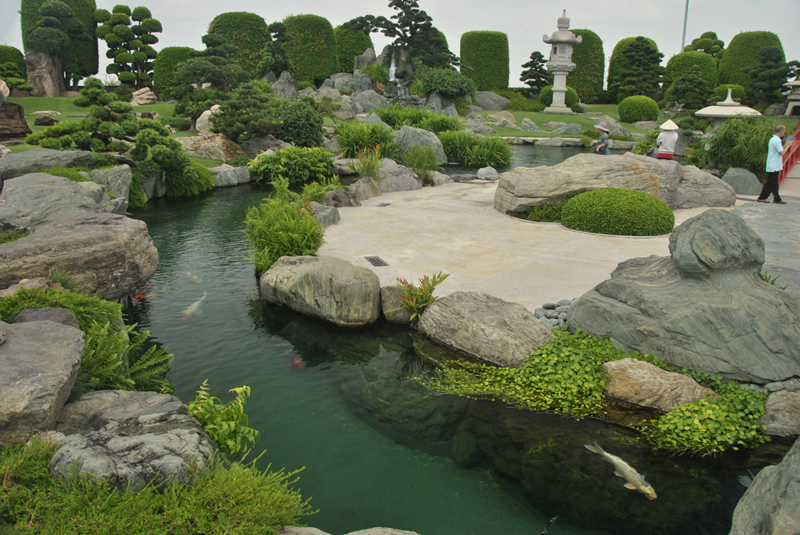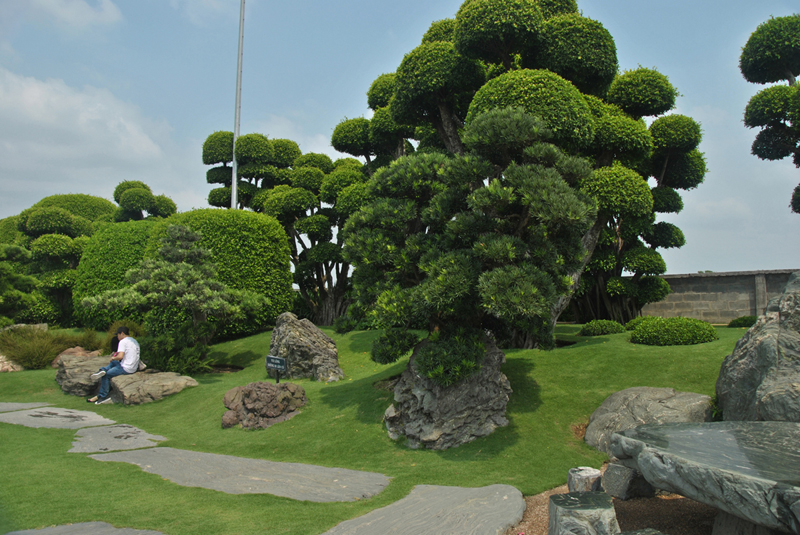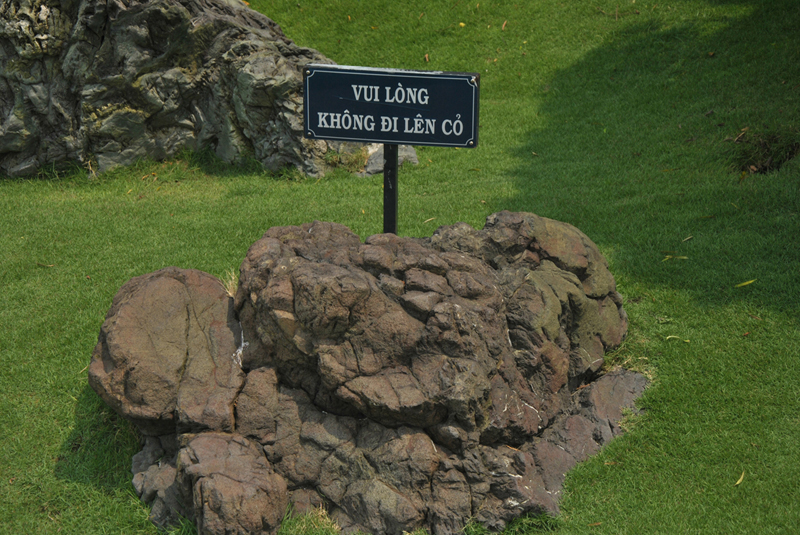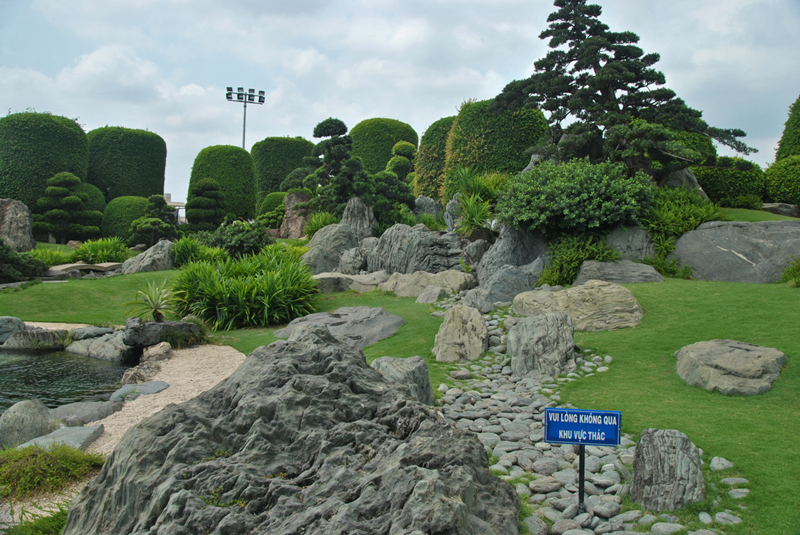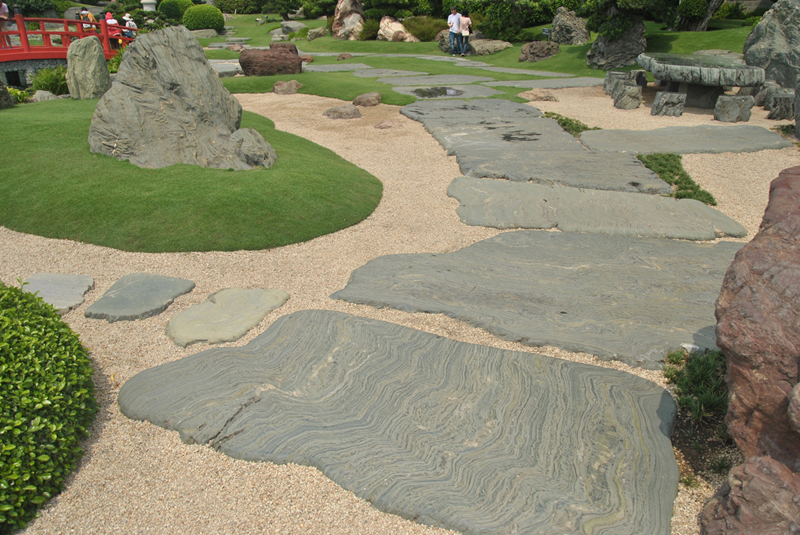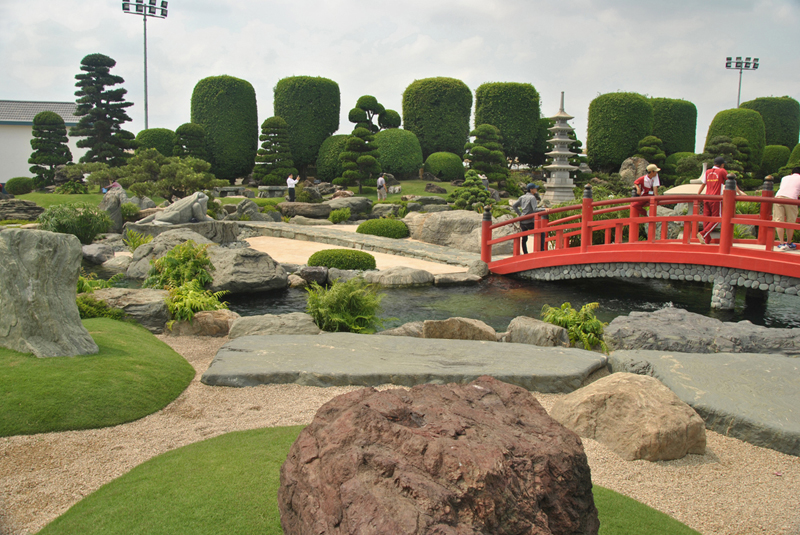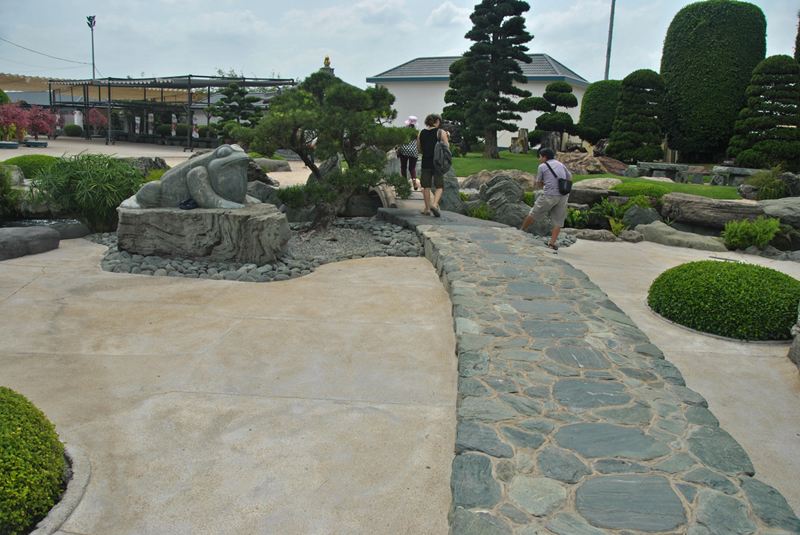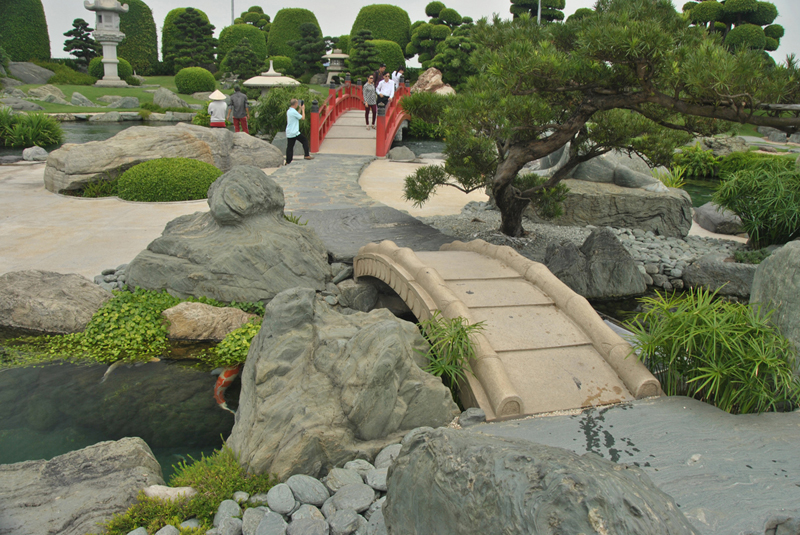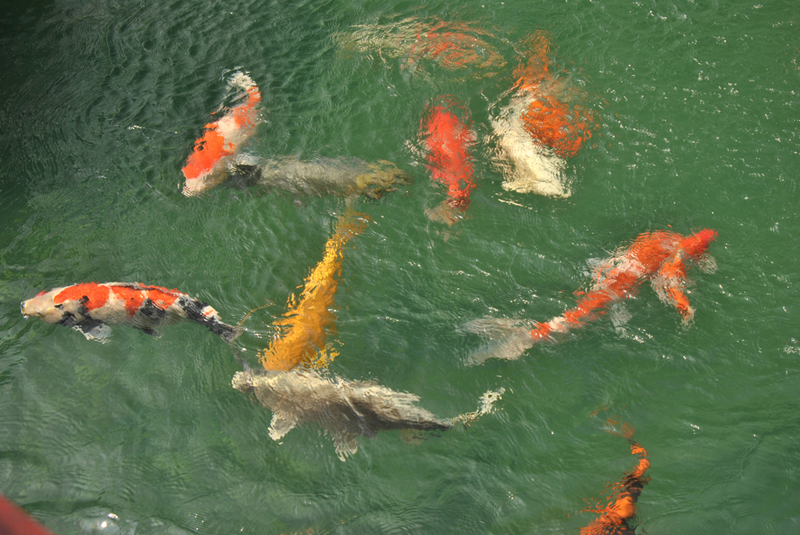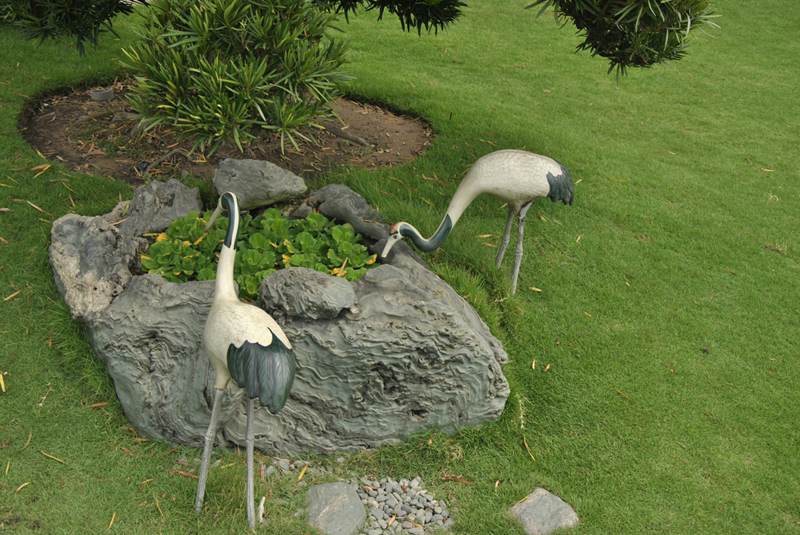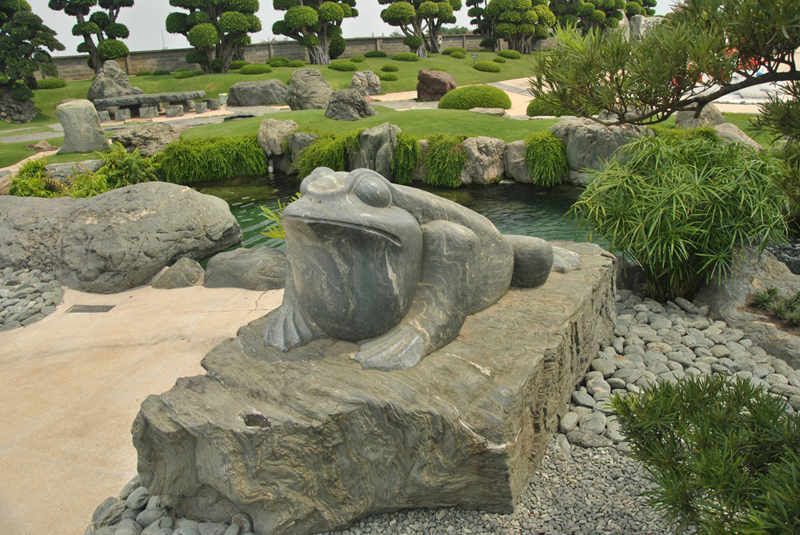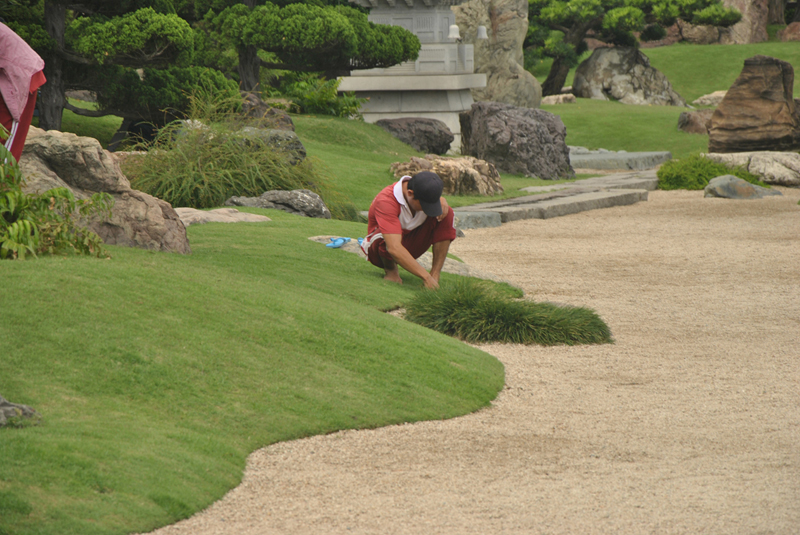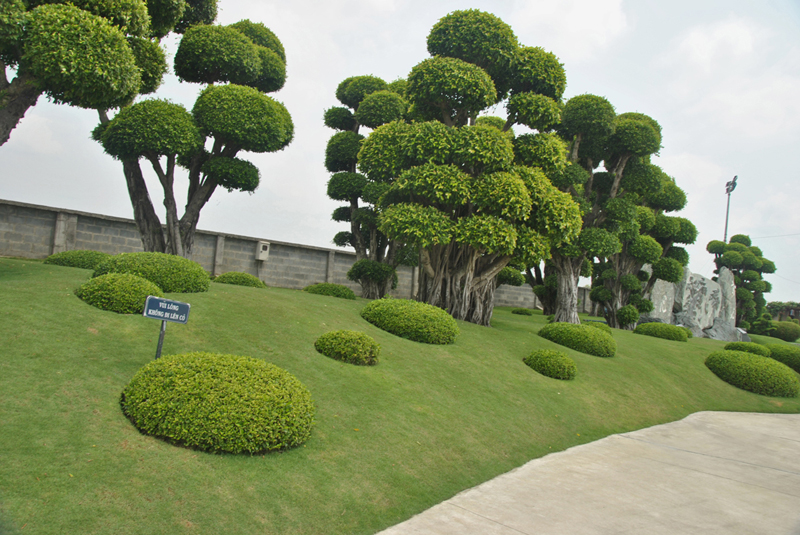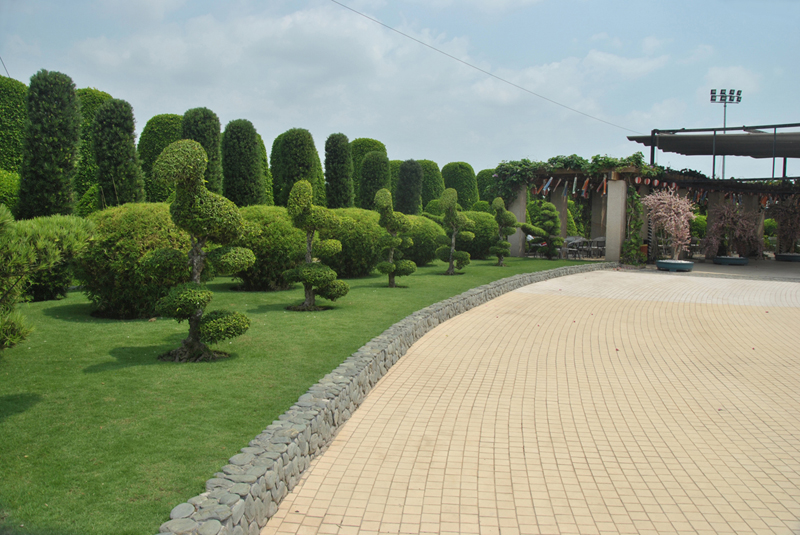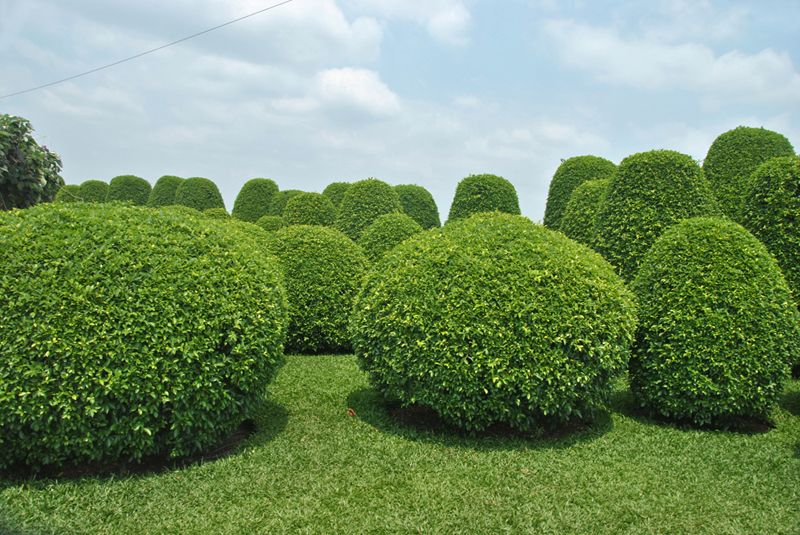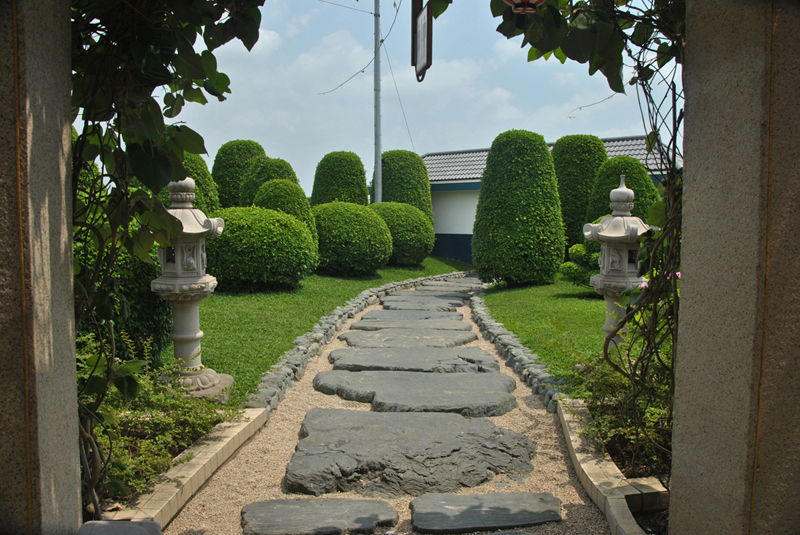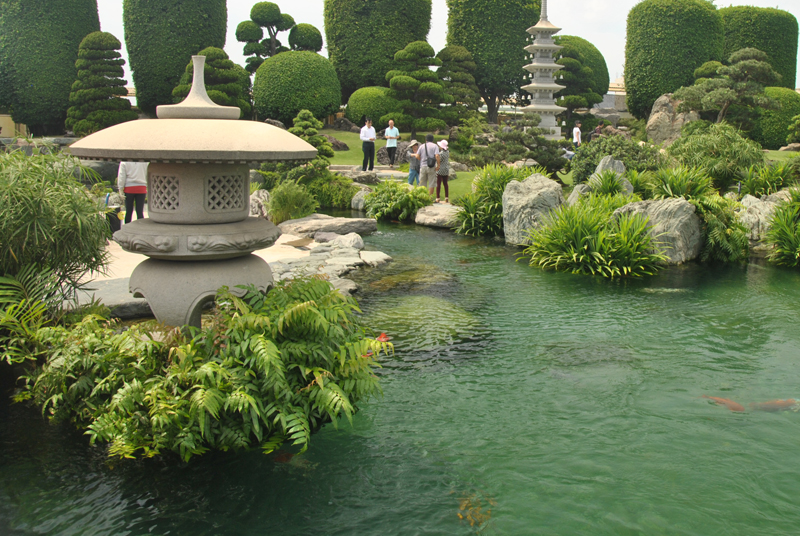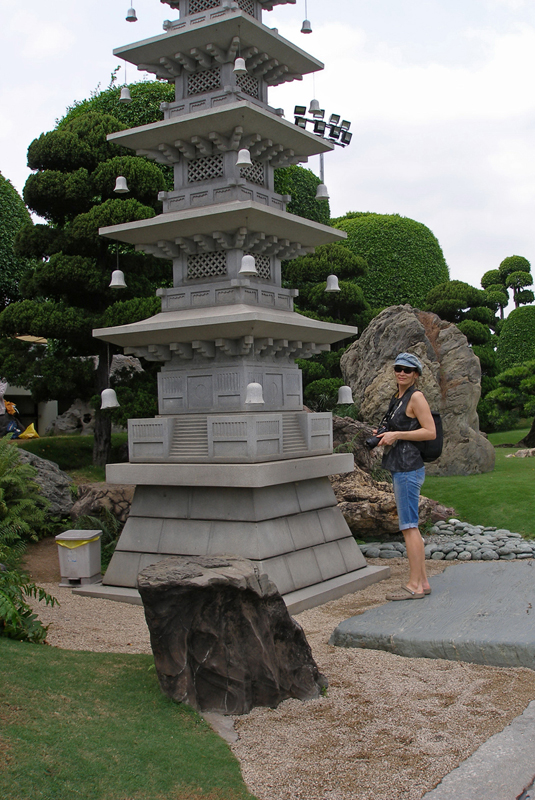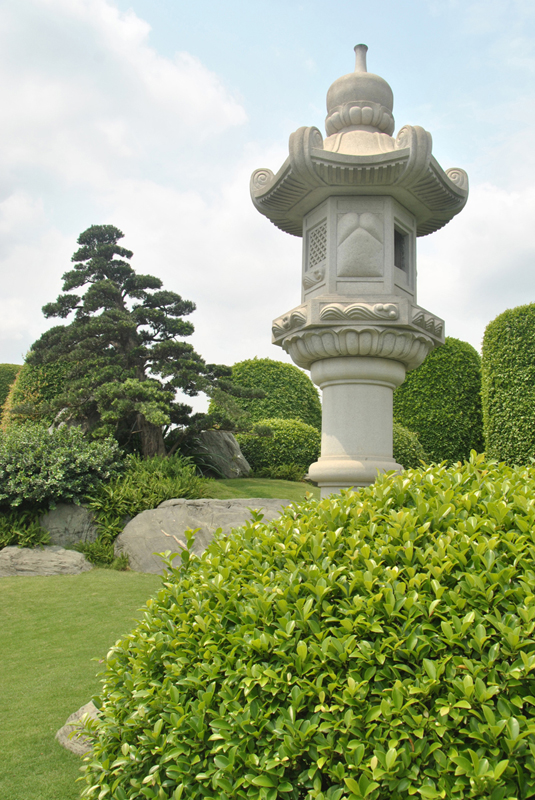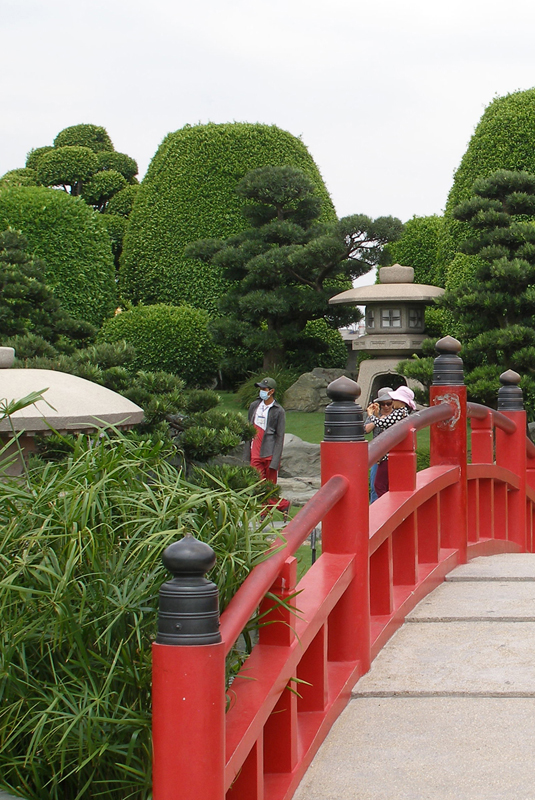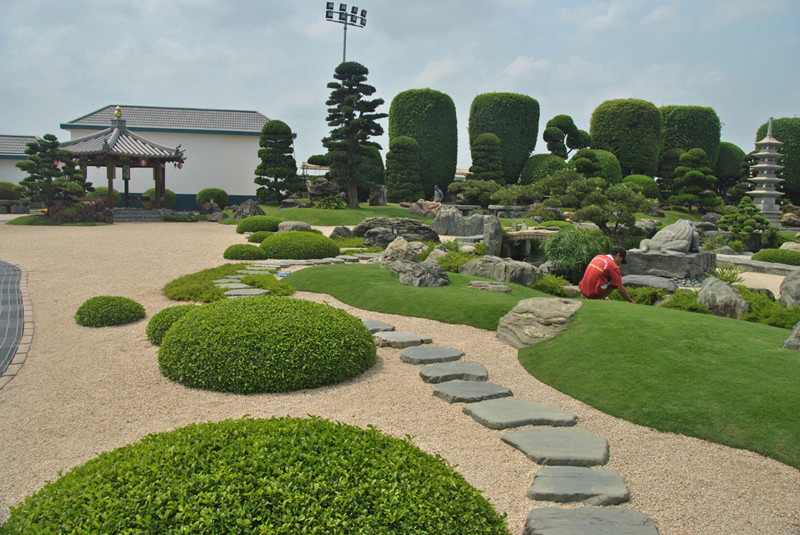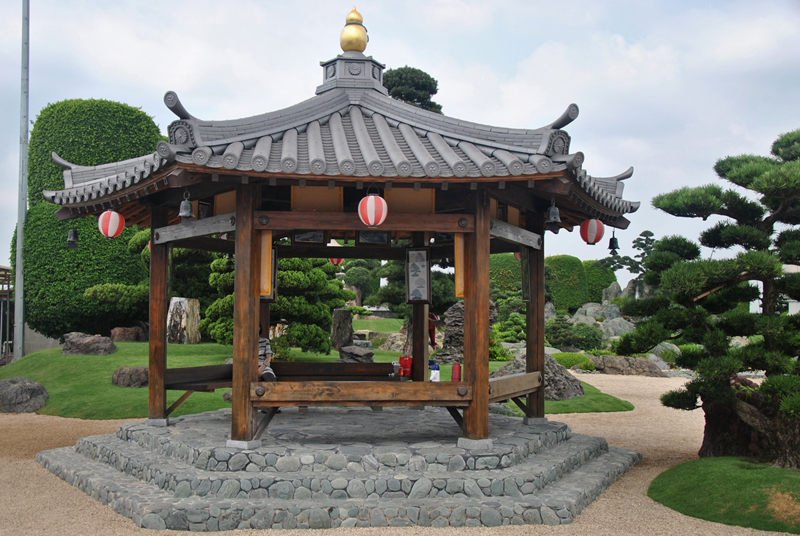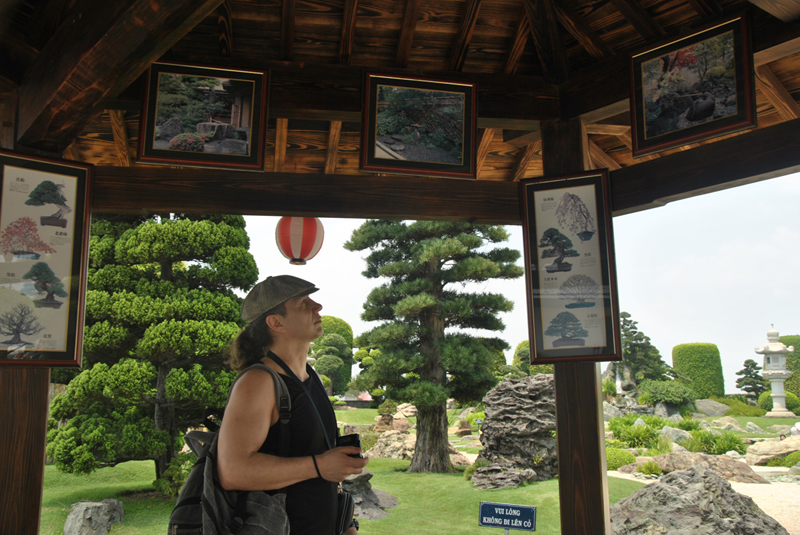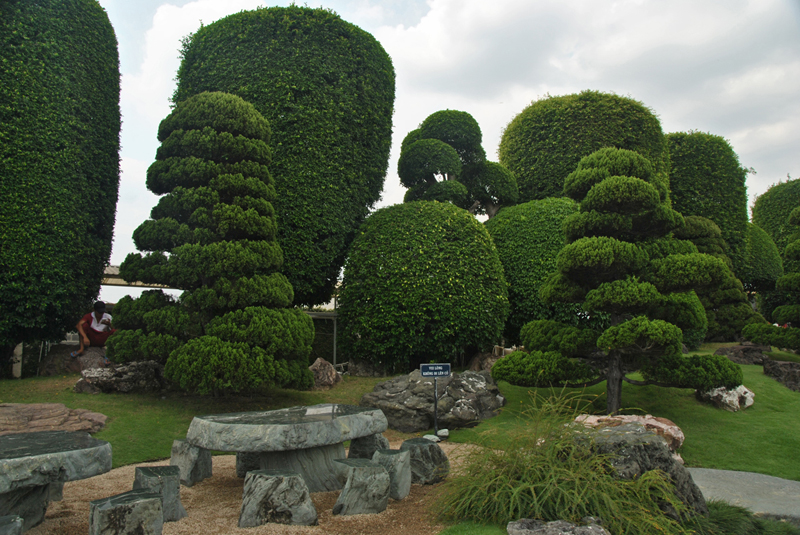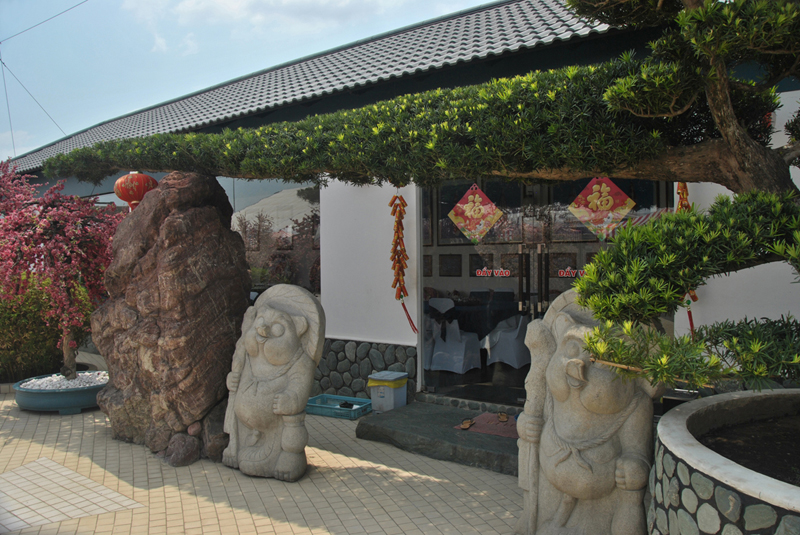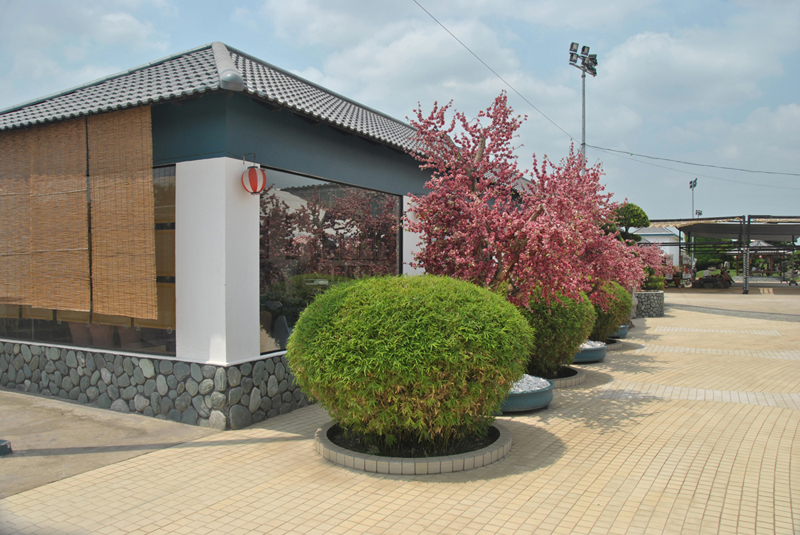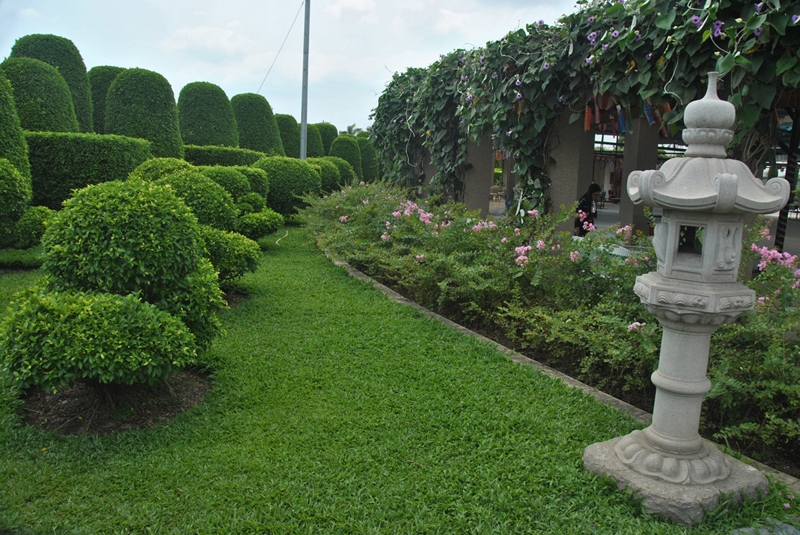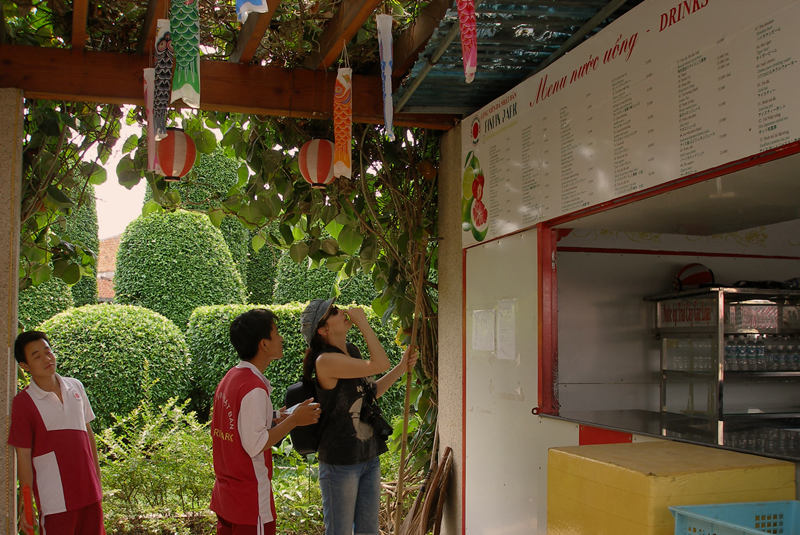
The Japanese Garden in Ho Chi Minh City (Vietnam)
The Japanese Garden is located not far from the center of Ho Chi Minh City. It was opened on February 3, 2014. Preparation of all materials for the garden took six years, and garden construction lasted seven months. The project was intended to improve friendly relations between Vietnam and Japan.The initiator of the creation of the park was Ngo Chanh. In 2012, he invested heavily in the creation of the park in Japanese style. Ngo Chanh spent 24 years in Japan. During this time he was falling in love with Japanese culture, admiring how well Japanese house combined with a garden. He also loved the rocky landscape of this country. Ngo Chanh believes that the Japanese live for long and have a good health precisely because they know how to relax after a hard day, enjoying a cup of tea in the beautiful garden.
Ngo Chanh has four companies. One of them specializes in working with stone. There are four Japanese artists in company's staff. Ngo Chanh is called in Vietnam the King of Japanese Stone Garden. As he said, the beauty of the stone should consist of 60% of natural beauty, and the remaining 40% should be brought by artist.
Creating a Japanese garden in Ho Chi Minh, Ngo Chanh wanted to introduce Vietnam with Japanese culture. Most of the materials were imported from Japan, including fish for the pond and stones. The second goal of creating this park was the development of tourism in his country. Rin Rin Park was conceived as a quiet place where the visitors can meditate, relax and take a rest, having escaped from the bustle of the city.
Unfortunately, not so much people know about this wonderful garden. All available information in the Internet is only in Vietnamese. Perhaps because the park has only recently been opened. Or because it is at some distance from the center of the city and there are no any other attractions or entertainment, which could be combining with a trip to the garden. Therefore, for those who are interested in gardening and who want to visit it, I write the address in the Vietnamese language, so you can show it to the taxi driver:
Dia chi: Vuon Nhat Ban - Rin Rin Park - xa Xuan Thoi Dong, huyen Hoc Mon, TP HCM.
The trip from the center of Ho Chi Minh City to the park took about 40 minutes (the duration depends on traffic). Then we saw the gates with the name of the park on it.
Ticket price is 50 000 VND (about $ 2.24).
The walls on both sides of the gate are decorated with images of carp. This is no accident. The garden was conceived as "a harmonious combination of three important factors, Stone-Fish-Plants, which together should to show the natural beauty of the typical Japanese garden." Big artificial carps meet us directly in the garden, in the area between the main garden and the exposure of huge stones on the right.
These stones also were imported from Japan. Near stones we can read the name of the stone, its weight, the name of the master, who did the work and the time he spent on it.
Thus, the largest stone with carved image of trees and cranes weighs 110 tons, and the work of Japanese artist Saito Yoshihiro took 2 years!
Also there is written the name of the place from where the stones were brought. It is Ehime Prefecture in northwestern Shikoku in Japan.
The basis of the composition of a Japanese garden in Ho Chi Minh City is a winding stream. It originates from the waterfall flowing through some large rocks. Beautiful pine rises above the rocks.
In fact, many bonsai here are about 500 years old, and they were also brought from the country of the rising sun. Unfortunately, the design of the garden doesnТt let the visitors to come closer to the waterfall, so we could take pictures only from the distance. I think it was done on purpose. The garden is located in small lowland, and along the border there are huge clipped plants. They create a background. There are several signs in Vietnamese warning that the climbing up is prohibited. With such structure of the garden we cannot see anything beyond it, we only enjoy an endless blue sky with light clouds. Using this technique the author of the garden creates the illusion of privacy as if we get to the paradise island without any problems or worries of the real world.
There is the dry stream to the right of the waterfall. It looks very natural. Tape of round gray pebbles is flowing between stones and it seems that the dry water is about to come to life. Alert garden workers watch that nobody would walk along the dry creek. Warning signs are also asked visitors about it.
However, in this small garden (the garden area is 20 000 sq. m) there is a lot of variety of paths and bridges, so you can walk, watching the fish in the stream or examining the fancy stones.
In the deepening of one of the stones there is the water with aquatic plants. A pair of artificial cranes drinks water from this basin.
Another stone is like a throne for a huge stone frog. Gray pebbles under it resemble puddle where this frog can lay eggs.
The garden is perfectly clean. Even in the hot weather a few workers swarmed in the grass, looking for rare weeds. Neatly trimmed grass, formed trees and bushes, clean paths and clear water - all this is so typical for the Japanese garden!
Even the way to the toilet looks like a work of art.
Walking through the garden, we saw several Japanese lanterns. Many of them are quite impressive size. In my opinion, there are too many lanterns, especially for such a small area. But they are located far from each other, so it is impossible to see them all at once.
Japanese Garden in Ho Chi Minh City also has places for relaxation. Firstly, it is an arbor near the entrance. You can hide here from the midday sun and look at the pictures of Japanese gardens.
The second place where you can sit is a few tables and stools made of stone. However, it is good for the rest only in cloudy weather.
And, of course, for those who are hungry, there is a Japanese restaurant with Japanese cuisine.
If you don't want to eat, you can take refreshments or the famous Vietnamese iced coffee in a small cafe located under a canopy entwined with green plants.
Ho Chi Minh City is the city for tourists stopping here for a day or two before they go to the sea, mountains or to another town. If you have a few hours of free time, visit this garden, it will not disappoint you!
anshin©2011All rights reserved. When using the materials of the site, reference is obligatory.
Proposals for co-operation, as well as comments and suggestions on the site please send to the address: anshin-sad@mail.rutel: +7 (965) 121-80-60, 10am-20pm
